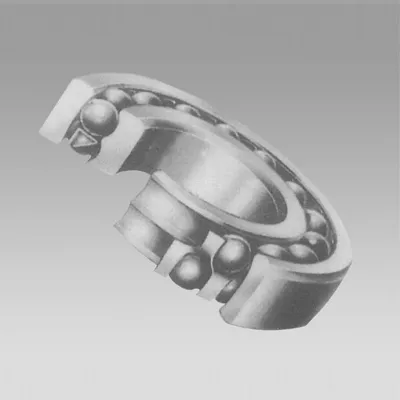
Nov . 17, 2024 01:21 Back to list
Deep Groove Ball Bearings and Their Ability to Support Axial Loads Effectively
Understanding the Axial Load Capacity of Deep Groove Ball Bearings
Deep groove ball bearings are one of the most widely utilized types of bearings in various mechanical applications. Their design enables them to support both radial and axial loads, making them versatile for use in diverse environments. A particularly important factor to consider when evaluating deep groove ball bearings is their axial load capacity, which refers to the maximum axial load a bearing can withstand while maintaining functionality and reliability.
What is Axial Load?
Axial load is the force that is applied parallel to the axis of rotation of the bearing. In practical terms, this means it is the load that tries to push the inner race of the bearing closer to the outer race along the axis. For instance, in a motor or a gearbox, axial loads can be generated due to transmission of power or due to the weight of coupled components. Understanding how much axial load a bearing can handle without failing is crucial for ensuring optimal performance and longevity of any mechanical system.
Structure and Design of Deep Groove Ball Bearings
Deep groove ball bearings are characterized by their deep raceway grooves, which allow them to accommodate larger loads than shallower groove designs. The precision steel balls contained within the races facilitate smooth rotation while providing support for both radial and axial loads. The design and material of the balls and races play a pivotal role in determining the bearing's load capacities.
Axial Load Capacity
deep groove ball bearing axial load capacity

The axial load capacity of a deep groove ball bearing is influenced by several factors, including the bearing’s size, the material used in its construction, and the degree of tightness of its fit. Generally, the load ratings specified by manufacturers indicate the maximum axial load that can be safely supported. However, it is important to recognize that exceeding these limits can lead to premature wear or catastrophic failure.
A common practice in the industry is to select a bearing based on the expected load conditions it will face in service. Engineers calculate the dynamic and static load ratings to ensure that the selected bearing can endure both radial and axial forces. It’s also crucial to consider factors like speed, temperature, and lubrication, as they can significantly affect the bearing’s axial load capacity.
Application Considerations
In applications where axial loads are prominent, such as in automotive, aerospace, and industrial machinery, carefully selecting the appropriate deep groove ball bearing is essential. Utilizing bearings that are rated appropriately for the expected axial loads can lead to enhanced performance, reduced downtime, and lower maintenance costs.
Furthermore, using deep groove ball bearings in configurations that allow for specific arrangements, such as pairing bearings with different load capacities, can increase axial load handling capabilities. Implementing proper lubrication techniques and ensuring correct installation can also help maximize the performance and lifespan of the bearings.
Conclusion
In conclusion, deep groove ball bearings present a reliable solution for handling both radial and axial loads in various applications. Understanding their axial load capacity is vital for engineers and technicians to ensure that machinery operates smoothly and efficiently. By carefully considering the load ratings and factors influencing their performance, one can select the right deep groove ball bearing, leading to improved operational efficiencies and durability in mechanical systems.
Latest news
-
Premium Deep Groove Ball Bearings | High Speed & Reliability
NewsAug.29,2025
-
Durable Scaffolding Clamps - Secure & Reliable Tube Connectors
NewsAug.28,2025
-
Common Failures in Thrust Ball Bearings and Solutions
NewsAug.22,2025
-
How Tapered Roller Bearings Can Take Shock Loads
NewsAug.22,2025
-
Angular Bearings in High-Precision Spindles
NewsAug.22,2025
-
The Impact of Misalignment on Cylindrical Roller Bearing Performance
NewsAug.22,2025
